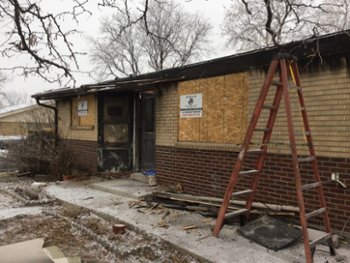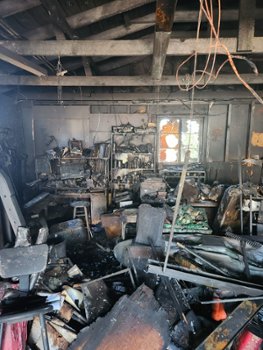After the Flames: A Step-by-Step Guide to Recovering from a Home Fire
By Chris Rizzuto - July 18, 2024
.png?t=20240718100709)
The sound of sirens, the smell of smoke, and the sight of flames engulfing your home - it's a nightmare that no one wants to experience. But for thousands of people every year, it's a harsh reality. The aftermath of a home fire can be overwhelming, leaving you feeling lost, anxious, and unsure of where to start the recovery process. The trauma of the event can linger long after the flames have been extinguished, making it difficult to navigate the complex and often daunting task of rebuilding and recovering. But there is hope. With the right guidance and support, you can rise from the ashes and rebuild your life. In this comprehensive guide, we'll walk you through the step-by-step process of recovering from a home fire, providing you with the essential tools, resources, and expert advice you need to overcome the devastation and start anew.
Section 1: Immediate Response - Safety and Emergency Procedures
Section 2: Assessing the Damage - Evaluating the Extent of the Fire
Section 3: Navigating Insurance and Financial Recovery
Section 4: Rebuilding and Restoration - A Step-by-Step Guide
Section 5: Emotional Recovery - Coping with the Trauma of a Home Fire

1. Immediate Response - Safety and Emergency Procedures
In the immediate aftermath of a home fire, safety is the top priority. The shock and trauma of the event can be overwhelming, but it's essential to remain calm and focused to ensure everyone's well-being. As you respond to the emergency, your first step should be to get to a safe location, away from the burning building or any potential hazards. Once you're at a safe distance, call the fire department or emergency services to report the fire. If anyone is injured, provide basic first aid if possible, and wait for professional medical help to arrive. It's also crucial to account for all family members, pets, and anyone else who may have been in the home. Once the fire has been extinguished, do not attempt to re-enter the building until the fire department or authorities have given you the all-clear. This is a critical moment, and it's essential to prioritize your safety above all else.

2. Assessing the Damage - Evaluating the Extent of the Fire
As the smoke clears and the flames are extinguished, the reality of the devastation sets in. The aftermath of a home fire can be overwhelming, with the once-familiar spaces now transformed into a scene of charred remains and debris. But before you can begin the long process of recovery, it's essential to assess the damage and evaluate the extent of the fire's destruction. This crucial step will help you determine what can be salvaged, what needs to be repaired, and what must be replaced entirely. Take a deep breath, steel yourself, and begin the painstaking process of surveying the damage. Walk through each room, carefully documenting the extent of the fire's reach, taking note of structural damage, water damage, and the condition of your belongings. Be cautious, as hazards like broken glass, exposed wiring, and weakened flooring may lurk beneath the surface. As you navigate the ruins, remember that every step forward, no matter how small, is a step towards reclaiming your home and rebuilding your life.

3. Navigating Insurance and Financial Recovery
The aftermath of a home fire can be a daunting and overwhelming experience, leaving homeowners feeling lost and uncertain about how to move forward. One of the most critical aspects of recovering from a home fire is navigating the complex and often frustrating process of dealing with insurance companies and financial institutions. This can be a minefield of paperwork, phone calls, and bureaucratic red tape, but it's essential to stay on top of these tasks to ensure that you receive the compensation you deserve to rebuild your home and your life. From filing claims and communicating with adjusters, to understanding policy coverage and dealing with potential disputes, the financial recovery process can be a long and arduous one. However, by staying organized, keeping accurate records, and seeking professional guidance when needed, you can navigate this challenging landscape and emerge stronger on the other side.

4. Rebuilding and Restoration - A Step-by-Step Guide
As the smoke clears and the chaos subsides, the daunting task of rebuilding and restoring your home begins. This overwhelming process can be broken down into manageable steps, allowing you to navigate the complex journey of recovery. First, secure your property by boarding up windows and doors, and tarping the roof to prevent further damage. Next, contact your insurance company to initiate the claims process and schedule an adjuster to assess the damage. Once the adjuster has evaluated the damage, you'll receive a detailed report outlining the scope of work required to restore your home. With this information in hand, you can begin the process of hiring a reputable contractor to oversee the rebuilding process. From there, it's a matter of working with your contractor to develop a detailed plan, obtaining necessary permits, and executing the restoration work. Throughout the process, be sure to stay organized, keep detailed records, and communicate regularly with your insurance company and contractor to ensure a smooth and successful recovery. With patience, perseverance, and the right guidance, you'll be able to restore your home to its former glory, and begin rebuilding your life.